Marks and Labelling
Lanyon Quoit, an ancient dolmen that stands on the road between Madron and Morvah, was the inspiration for the Tremaen Mark.
There is little consistency in the marking of Tremaen. Early pieces often had an impressed mark but later pieces had small labels attached. These were often placed on the side of the pot and it is not surprising that most have been removed or lost. The irritating sticky residue from the glue is often the only evidence left of a label. Paper labels were also attached to the underneath of lamp bases but again many of these have been lost through time, particularly when the felt has been disturbed to rewire the lamp. Different coloured labels were used, sometimes in conjunction with an impressed mark. Using paper labels was perhaps favoured because of the difficulty of impressing leather hard slip moulded pieces with the mark. Some impressed marks, formed as a circular lozenge, were later attached to the sides of the lamp bases prior to firing.
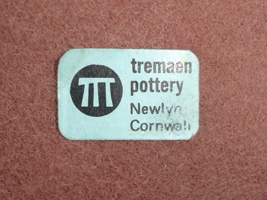 blue lamp base label |
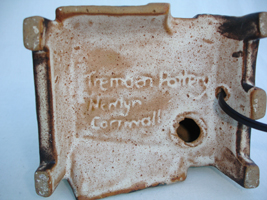 couple in bed lamp base hand written mark |
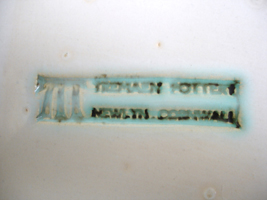 dish impressed mark |
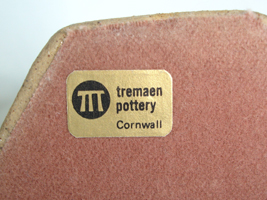 gold lamp base label |
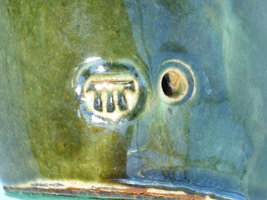 lamp base impressed mark |
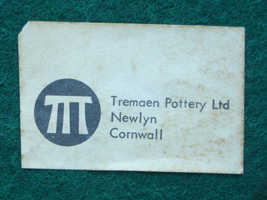 lamp base paper label |
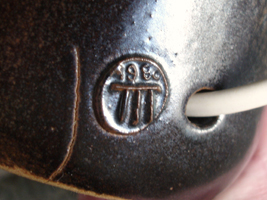 lamp base with dated lozenge mark |
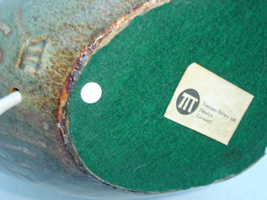 lamp base impressed mark and paper label |
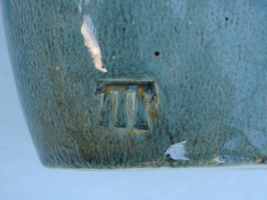 large moon vase impressed mark |
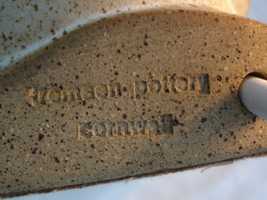 figural lamp base impressed mark |
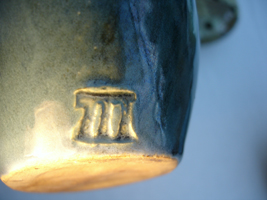 small moon vase impressed mark |
Identifying Tremaen is not a precise art but there are distinctive glaze colours, features and qualities that make Tremaen instantly recognisable to the discerning eye.
The following identification checklist may be useful;
1. Is there an impressed mark or paper label attached?
2. Is it moulded? (If it is thrown it almost certainly isn't Tremaen)
3. Is the colour pastel, muted, earthy or rusty?
4. Does it depict Cornish scenes or features of the landscape?
5. Are there influences of period abstract designs or sculptures?